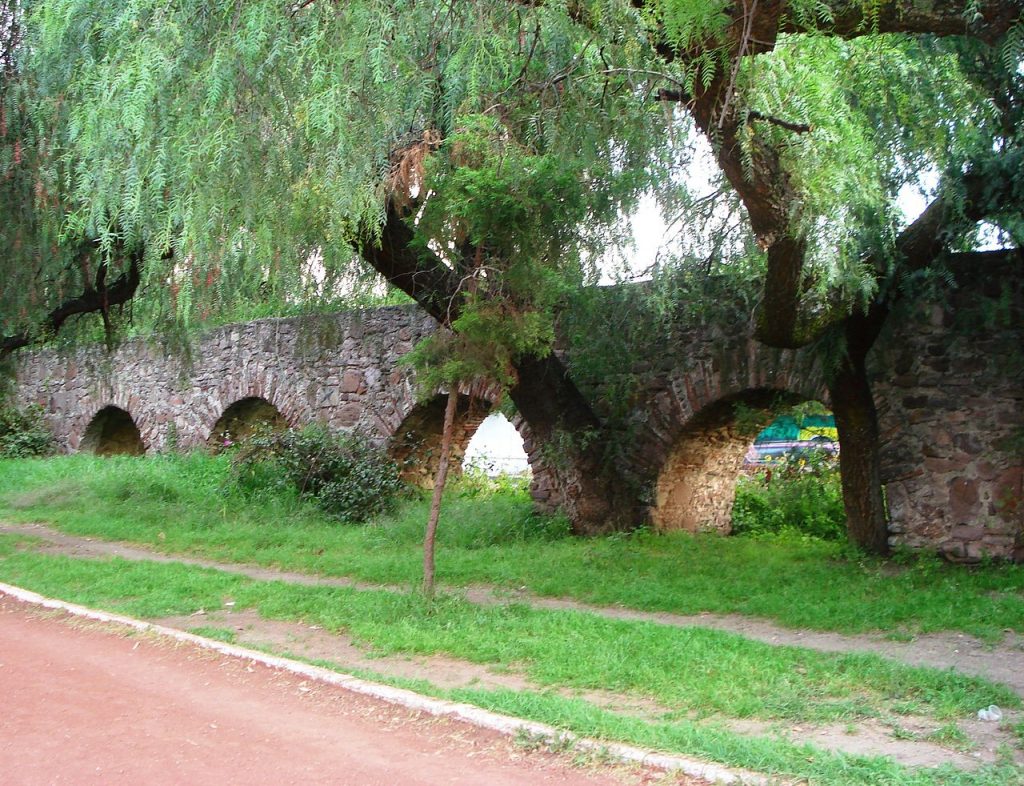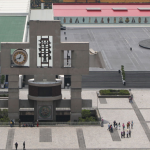
The Guadalupe Aqueduct is a colonial-era stone waterway, once one of many that brought water into the city. Built in the mid-18th century, it carried water from the Tlalnepantla river in Santa María Tlalnepantla to the Villa de Guadalupe. Today a neighborhood in Gustavo A. Madero bears the same name, and but for a section of the same stone arches, it would be but a memory.
Begun in 1743, when the City of Guadalupe broke away from the Republic of Indians of Santiago Tlatelolco (and from which they’d previously gotten water), the new aqueduct was completed in 1751.
Originally some 10 kilometers in length, it ran to a fountain behind the old Basilica. The fountain was some 10 meters in diameter and once stood in front of the temple. This was fed by the same water source. In the center was a column with four effigies representing the four parts of the known world, and at the top a statue of the Virgin of Guadalupe.
Parts of the aqueduct ran underground until the current Tenayuca, on the border between Mexico City and Tlalnepantla. After that, no fewer than 2,310 arches ran all the way to the Gustavo A. Madero park, the home of the Indios Verdes monument, today. Along the way were multiple other pools and fountains and all of these were made from stone quarried at the Cerro de Guadalupe. Several of these can still be seen.
It’s said that hero of the insurgency (i.e.; the independence war), José María Morelos drank from the fountain here in December. 1815. Shortly thereafter, he was executed in nearby Ecatepec for sedition.
During the Porfirato, the aqueduct was finally replaced by iron pipe. It stood idle until 1932, when it was finally declared a Historical Monument. Sidewalks and recreation areas along the arches were added only in 2006. The Guadalupe Aqueduct may also be recognized by some film buffs for its popularity as a film setting for productions made during the 1940s and 50s.

0.08 kms.

0.87 kms.

The Old Basilica de Guadalupe is, for some visitors, even more interesting than the new one!

There's big new plaza to the east of the Basilica and there's more to it than you thought!

There's no excuse to go hungry if there's a market nearby, and there usually is...